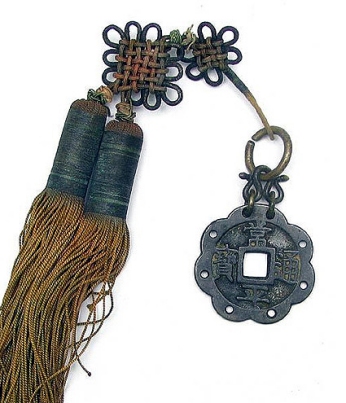
Commemorative Coin Charms 별전 (別錢)
Korea’s earliest commemorative medals were not medals at all, but were amulets or good luck charms. Koreans use the term Byeol Jeon 별전 (別錢) meaning “Separate or Special Money”, while collectors outside of Korea, refer to them as “Coin Charms”. It is extremely hard to get any specific information on the history, origin or dates of manufacture for individual pieces.1 The vast majority of these amulets were produced between 1850 and 1910; however, there are earlier charms, such as the one pictured at right which purportedly dates from the Three Kingdoms Period of Korean History. Hundreds of amulets have no known historical significance, outside of their existence.
Millions of coin charms and chatelaines were melted down during the world copper shortage of 1907 and again in the 1940s to augment Japan’s war needs. The Korean War saw the destruction of many more pieces. Many historically important pieces have been destroyed. Korean collectors of coin charms are a very passionate group. Unfortunately, North Korea has been reproducing Korean coin charms and this has put a significant damper on the hobby.
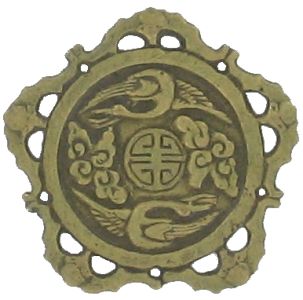
King Kojong’s ascension to the throne. (68 mm)
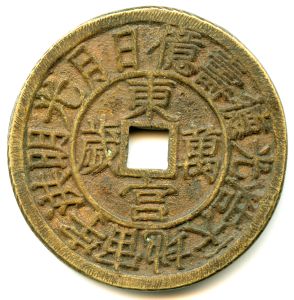

King Kojong’s birthday. (66 mm)
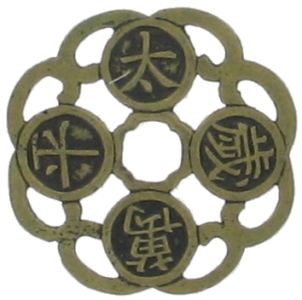
construction of Kyong-bok Palace 경복궁 (景福宮). (53 mm) (The inscription “Peace 10,000 years”)
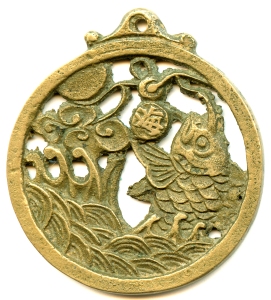
Imperial Virtues. (39 mm) The inscription “Sea” 海 (해) implies abundance
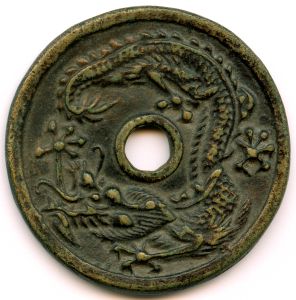
the birth of the Heir Apparent. (49 mm)
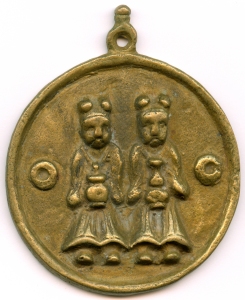
Wedding of the Crown Prince. (57 mm)
The two figures seen in many coin charms are not meant to represent a happy couple. They are spirit attendants, Dong Ja (동자-童子) and they hold various objects usually described as the Elixir of Long Life or the Peach of Immortality. Every feature on a coin charm holds a special significance. The two circles on the charms at left and right represent the Spirits of the Sun and Moon.

King Kojong’s wedding. (70 mm).
Chatelaines
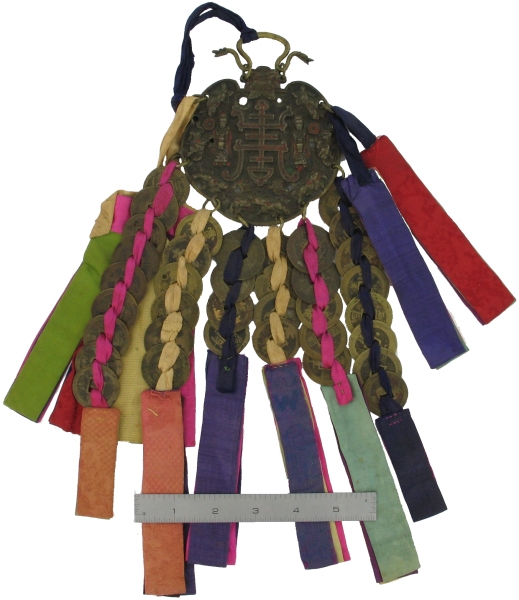
About 1880, it became fashionable to tie Korean Coin Charms to larger pieces called Kae Kum P’ae 개금패 or Yul Sae P’ae 열쇠패. The terms Kae Kum P’ae 개금패 or Yul Sae P’ae 열쇠패 are generally translated as Open Metal Key Plaque. Western collectors use the term chatelaine. Before a wedding, the bride’s family would go to their relatives, neighbors, friends and political allies and ask for pieces of cloth, ribbon, string, coins, and/or coin charms. Each donation represented a wish for the happy couple. These smaller items would be tied together onto larger chatelaines and presented to the bride on her wedding day. In the case of a wealthy and/or a politically well-connected family, these assemblages could be enormous and very ostentatious. After the wedding, the assemblage would be hung in the women’s quarters of the house. I know of at least one instance where the completed assemblage has been handed down through the generations.
